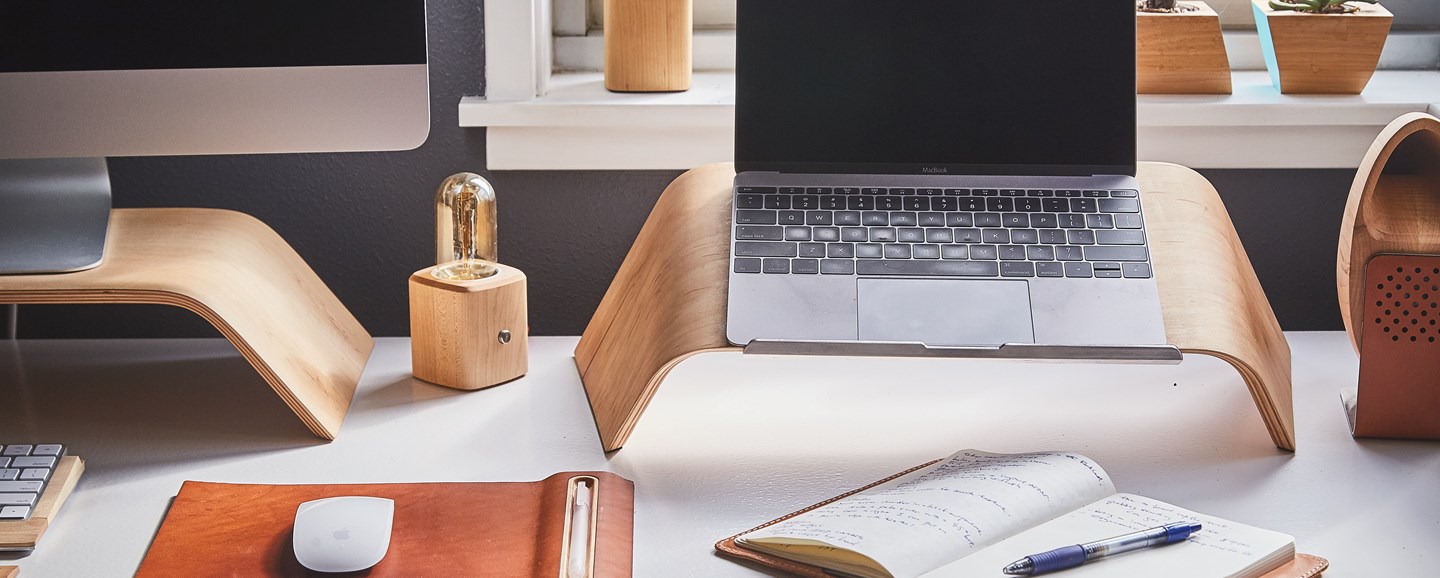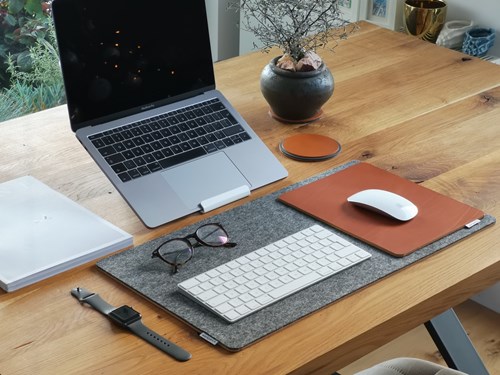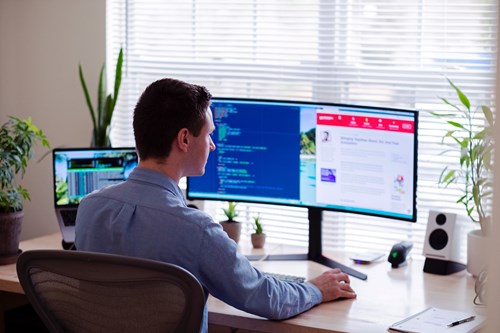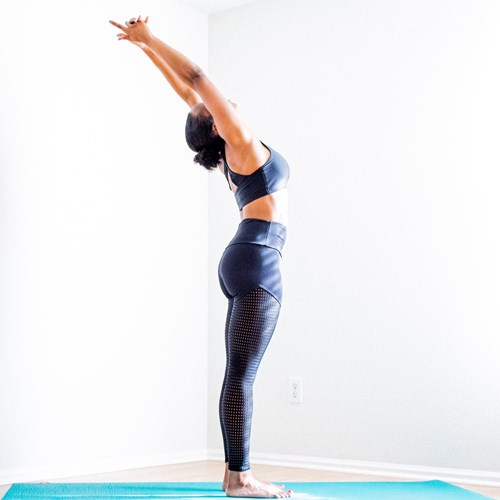
Is your working from home set up doing more damage than good?
Most of the UK workforce has been adapting to working home, whether that is from dining tables, kitchen tables or even kicking back on sofas. This is fine for periods of time but if you are sitting in one position at a table, on a non-ergonomic chair, staring down at your laptop, you’re likely to feel a few aches and pains after a while.
We thought we would catch up with Stuart, our Managing Director with a few of his ideas to help alleviate some of these issues.
1. Look at investing a small amount of money in an ‘adjustable’ laptop stand so you can raise the height of the laptop screen closer in line with your eye level when you’re sitting upright. You should only use this along with a wireless (or wired) separate keyboard and mouse. This will not only make you to sit up straighter as your screen is higher, but you can also move the screen further away from your face because you have the other keyboard and mouse to use. This will help with potential eye strain and rounding of the shoulders as you lean over the laptop keyboard. As a rough rule of thumb, if you are sitting facing your screen, put your arm out straight and make a fist, the screen should be approx. that far away from your face (obviously this varies slightly dependent on your eyesight, screen font size, etc, but it gives you a starting point). If you don’t want to spend the money on the adjustable stand, just use some books but you must have a separate keyboard and mouse to use in this situation!


2. Don’t sit with your legs crossed or folded under you, it restricts blood flow and can lead to pins and needles or cramping. Try and keep your feet flat on the floor, it helps with your core stability and stops you putting unnecessary pressure on your spine. Wiggle your toes and ankles, maybe a little foot shuffle across the carpet to some music in the background, keep some movement but always go back to feet flat on the floor if possible.
3. If your chair seat is a bit high, meaning your feet aren’t able to be flat on the floor, get something to put under them and raise them up otherwise your blood circulation is being restricted through the back of your thighs where they cut across the front of the chair seat.
4. Having your feet flat on the floor (or on top of some books, a box, firm cushion, resting family pet, etc) will hopefully allow you to sit back into the chair, giving you max support to your back. If the seat is a bit deep, try and find a cushion or other support, particularly for your lower back (lumbar) region. By making tiny adjustments to each element of how you are sitting can make a huge difference to your comfort and wellbeing. You don’t necessarily need to have your back against the chair all the time, just try and sit as upright as you can.


5. Make sure you get up and move about regularly. Now more than ever you could find yourself sitting for a long time without getting up because you won’t be walking over to ask a colleague a question, going to the printer, etc. Maybe do some stretches for a couple of minutes every hour. Our very own Karen James has started regular online yoga classes for our team, now online via ZOOM. There are so many great online videos that you can do from the comfort of your own home that can help with this, just go on YouTube and search for ‘10 minute yoga’.


6. Don’t be afraid to mix it up! You can sit on the sofa and work for a while, then at the dining/kitchen table or even standing up with your laptop on the chest of drawers, as long as the chest of drawers is about the same height as your elbow height when standing relaxed. The key is making sure your posture is good and that you don’t spend too much time in one position before moving/stretching/taking a break. Make sure you aren’t leaning over your computer because it’s too low, putting pressure on your spine, or sitting too low with the keyboard above elbow height, putting pressure on your neck and shoulders.
These are simple changes that we hope will make you feel more comfortable while working from home. If you’d like to have a chat with our team and get their advice on managing your furniture working from home, get in touch here we are happy to help!